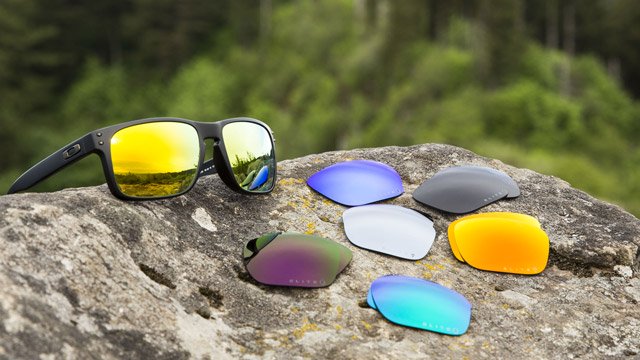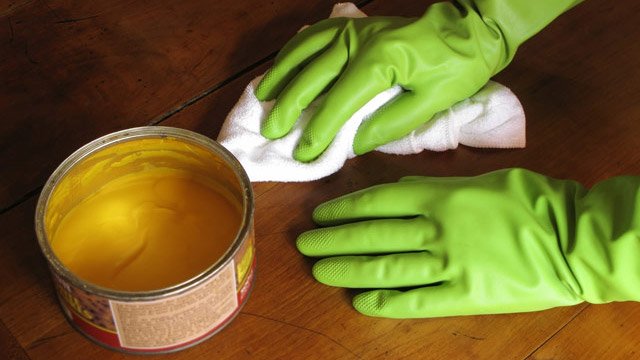how to fix scratched glasses
Scratches on glasses are a pain. That's why we scoured (pun intended) the internet for promising ways to remove scratches from glasses. Spoiler alert – the old adage holds true here. "If it's too good to be true, it probably is."
What all those tutorials fail to mention is that you're essentially ruining your lenses in the process of removing those scratches, if you can even get the scratch out at all.
So let's get right into how to fix scratched glasses.
Method 1. Toothpaste & Baking Powder
These methods take a long, long time, and they still might not prove effective, but hey, the price is right. In theory, the micro-abrasives within the substances, when combined with force, can gently buff out the scratch. This theory isn't wrong — eventually, the constant pressure and grit could wear the lens down to the point where the surface is even with the scratch's depth.
BUT it's not going to happen in one application, or two, or probably even 25. You're dealing with micro-abrasives that are safe and gentle enough to put in your mouth. If you think they'll wear down that scratch in one go, they won't.
So if you have the patience of a zen master and are OK with lackluster results, you might want to give it a whirl. Otherwise, let's see what's behind curtain number 2.
Method 2. Sunscreen
This method is applicable for lenses with mirror coating, and it does work. Kind of. At least, it works if the scratch only affects the mirrored layer of the lens. If it cuts into the plastic or glass, you've still got a problem.
You can't use a spot treatment with this method. If you're going to use sunscreen to remove a scratch, you've got to remove the entire layer of mirror coating — dramatically altering the appearance of your lenses, the view tint, and the light transmission of the lens.
If you have lenses that are not inherently UV protective (such as glass), then you're also potentially stripping the UV coating from your lens, and subjecting your eyes to greater risk than if you were to simply go without sunglasses.
Here's the science behind that: If you're out in bright sunlight without anything shielding your eyes, your pupils shrink to limit the amount of light getting in. But if you stick a dark lens over your eye, the pupils dilate to capture as much light as possible. The problem is, if your lenses don't have a UV filter, your expanded pupils are now taking in more dangerous UV rays, increasing the risk of cataracts and macular degeneration.
Nothing about that situation sounds fun.
Method 3. Glass Etching
Ironically, this shouldn't actually be used on glass lenses. You'd think from the name, but no.
This method is only recommended for plastic lenses with a coating, because that's what you'll be stripping off to remove the scratch. The active ingredient in glass etching products is hydrofluoric acid, which is highly corrosive. It eats the top coating off of the plastic lens. This brings us back to the same issue as with the sunscreen. And you can't selectively decide which coatings will stay and which will go. If you strip one, you strip them all.
Method 4. Furniture & Car Wax
Despite its place on nearly every list regarding scratch removal, wax, of any kind, should not be used on lenses. Cars or furniture, sure. The use of wax to hide a scratch in the leg of your armchair doesn't change the effectiveness of the chair. But one of the inherent properties of an effective lens is the ability to look through it.
If you're trying to see the world through a layer of wax, you're just making things worse.
Method 5. Sandpaper
Yes, you read that correctly. One of the less-often touted methods is to use sandpaper to grind the lens down to the depth of the scratch, and then use a buffing wheel and wax to polish the lens back to a shine. It looks really good. Emphasis on the word look. It may also take up a substantial chunk of your evening.
If the only thing you care about is getting rid of the scratch, and you don't particularly care about the effectiveness of your lens, then this method works.
But if you think that altering the clarity, refraction, and possibly the prescription of your lens, while also stripping all the beneficial coatings such as hydrophobic, anti-glare, and UV protection is not the best plan, then it may be best to put the sandpaper down now. If you really need an excuse to use a power tool, go hang some shelves in your garage. The world could always use more shelves.
And now, the moment you've been waiting for — the best solution to getting rid of scratches and bringing your sunglasses back from the dead . . .
Method 6. New Replacement Lenses
Did you even know this was an option?
A lot of people don't. They assume scratched eyeglasses means a sad end to their favorite pair.
Not so. Not any more.
Replacement lenses are typically far less expensive than purchasing a new pair of sunglasses. You can give new life to the frames you already own and you won't need to mess around with any of the nonsense we talked about above.

Replacement lenses are a guaranteed solution for scratched sunglasses.
Here's why you should give them a try:
- Revant replacement lenses start at $24
- The installation process is quick and easy — there are videos on how to remove and install lenses for every frame
- There are SO many ways you can customize your look — including polarized, mirrored, photochromic, and clear lenses
- FREE shipping (both ways) in the US
- No-hassle 60-day satisfaction guarantee and a 1-year warranty
- The best option outside ofpreventing scratching your glasses
Shop Revant replacement lenses here. If you order before noon on a weekday, they'll ship the same day.
Save yourself the time, money, and disappointment of trying to remove scratches yourself and look into just replacing your lenses. You'll be glad you did.
how to fix scratched glasses
Source: https://www.revantoptics.com/blogs/the-lens/how-to-remove-scratches-from-sunglasses
Posted by: bryanthiseld.blogspot.com



0 Response to "how to fix scratched glasses"
Post a Comment